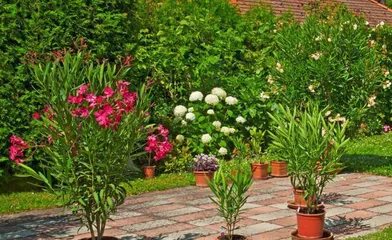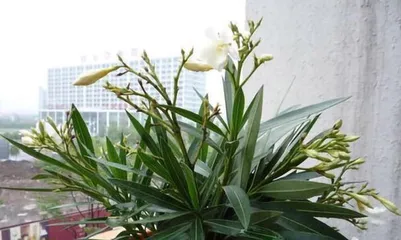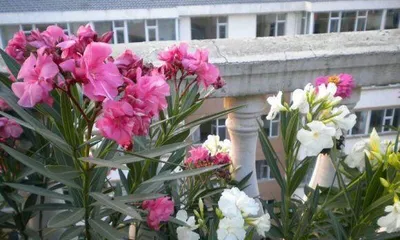Summary:
Oleander, as a highly ornamental flower, is loved by many gardening enthusiasts. However, many people don't know how to properly care for it, leading to problems such as short blooming period and dull flowers. This article will detail the care methods for oleander, allowing you to easily create a beautiful garden.
Oleander, as a highly ornamental flower, is loved by many gardening enthusiasts. However, many people don't know how to properly care for it, leading to problems such as short blooming period and dull flowers. This article will detail the care methods for oleander, allowing you to easily create a beautiful garden.

I: Selecting Healthy Oleander Plants
Oleander plants should be chosen that are growing healthily, have well-developed roots, and are free from pests and diseases. The plants should have healthy trunks and leaves without damage or scars.
II: Suitable Soil
Oleander prefers loose, fertile, and well-draining soil. Soil that is too heavy or too light is not suitable. You can use decomposed organic fertilizer and sand to improve the soil.

III: Ample Sunlight
Oleander is a sun-loving plant and should be placed in areas with plenty of sunlight and good air circulation. Avoid growing in dark and humid environments, otherwise it will lead to short blooming periods and less vibrant flowers.
IV: Suitable Temperature
Oleander has high temperature requirements, with the optimal growth temperature being 18°C-25°C. During hot seasons, pay attention to regular watering and ventilation to avoid excessive dryness and high temperatures.
V: Moderate Watering
Oleander cannot tolerate drought, but neither should it be overwatered. Generally, water once or twice a week, and increase the frequency during summer heat. Avoid waterlogging and dehydration; do not let the soil become overly wet or dry.

VI: Scientific Pruning
Pruning oleander can promote lateral branch growth and branching, controlling the tree shape and flower size. It is generally recommended to prune in spring, no more than three times per year.
VII: Timely Pest Control
Oleander often suffers from insect infestations such as aphids and spider mites, requiring timely pest control. Biological pesticides or chemical pesticides can be used for prevention, but pay attention to concentration and application timing.
VIII: Proper Fertilization
Fertilizing oleander requires attention to proper amounts and timing. Organic fertilizers, compound fertilizers, or specialized flower fertilizers can be used. Spring and summer are the best times for fertilization.
IX: Avoid Strong Winds and Heavy Rain
Oleander flowers are delicate and fragile, easily affected by strong winds and heavy rain. Provide timely shelter and protection to prevent flower drop or branch breakage.
X: Disease Prevention
Oleander often suffers from diseases such as leaf spot, anthracnose, and downy mildew. Regularly remove wilted leaves and dead branches, maintaining good ventilation and dry conditions.
XI: Proper Transplanting
Oleander is generally transplanted once a year, preferably in spring. Prepare new soil and pots before transplanting, paying attention to protecting the root system during transplantation.
XII: Scientific Flower Induction
Oleander can use flowering promoters to stimulate bud formation and flowering, but pay attention to concentration and usage methods.
XIII: Prevent Moisture Absorption
Oleander is prone to absorbing moisture, especially during the rainy season and in hot, humid climates. Ventilate promptly and maintain dryness to prevent flower rot and stem mold.
XIV: Moderate Shading
Although oleander loves sunlight, it also needs moderate shading during summer heat. Use shade nets or tree shade to lower temperatures and maintain a comfortable growing environment.
XV:
Caring for oleander requires attention to multiple factors including soil, water, light, temperature, and pruning. Only through scientific and reasonable care can oleander bloom most beautifully in your garden.